8 Mistakes People Make Buying A Home Battery
By Finn Peacock – Chartered Electrical Engineer, Ex-CSIRO, Founder of SolarQuotes.com.au
Last Updated: 3rd Jan 2025
A well-installed, properly sized home battery can protect you from both blackouts and your electricity retailer. If the grid goes down, your energy storage system can automatically kick in, keeping your lights and essential appliances running.
If your electricity retailer hikes your electricity tariff rates, with a big enough battery and solar power system, you won’t care.
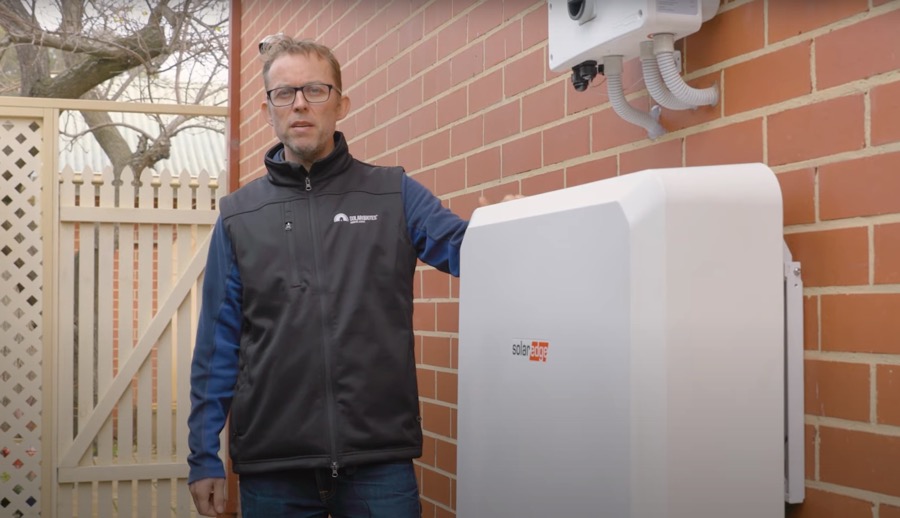
The Author with a freshly installed SolarEdge Home Battery (10 kWh, 5 kW – read on to discover what that actually means…)
But home batteries are not cheap. At least the good ones aren’t. So if you’re considering investing in a battery for your home, don’t go in blind.
Here are the biggest mistakes I’ve seen people make when buying batteries. Avoid these, and you’ll be well on your way to getting an excellent system that works trouble-free for many years.
Mistake #1 – Not enough solar power
Most people buy a battery primarily to store their surplus solar energy. But I see a lot of battery owners with solar systems too small to keep their batteries charged through winter or periods of cloudy weather. This cripples their energy storage savings.
Most family homes in Australia will need a pretty big solar power system to fully charge a typical home battery through the entire year – including winter and overcast days. I’d recommend 10kW of solar or more where possible.
Mistake #2 – Buying the cheapest home battery
It’s not rocket science. Cheap quotes for batteries = low margins for installers = rushed installations with inferior quality products and little-to-no after-sales support.
This is deadly serious. Lithium-ion batteries are made from a range of flammable compounds. When they charge and discharge, they generate heat. If charging and discharging aren’t managed correctly or there is an electrical fault, “thermal runaway” can occur. Thermal runaway is a fancy way of saying “big-ass fire”, and with the combustible material in lithium-ion batteries, they can burn for hours.
Don’t gamble with your safety to save money. If you can’t afford a decent battery + installation, don’t buy one at all.
Mistake #3 – Getting ripped off
The only thing worse than paying too little and getting a crap battery is paying too much and getting a crap battery.
It’s depressing how often people are quoted a crazy high price for a small and/or crap energy storage system.
You’d hope overpaying will at least protect you against shoddy installations. Sadly, this isn’t the case. In my experience, many companies that charge sky-high prices for batteries don’t care much for quality installations.
It breaks my heart to field calls from concerned pensioners who have spent a small fortune on a tiny battery sold to them by a door-knocking high-pressure salesman and installed by a clown.
The solution here is – get multiple quotes from good installers. You’ll quickly figure out the market rate for a well-installed battery that really suits your needs.
Mistake #4 – Only considering a Tesla Powerwall
The Tesla Powerwall is a brilliant battery. I bought one more than five years ago, and I love it.
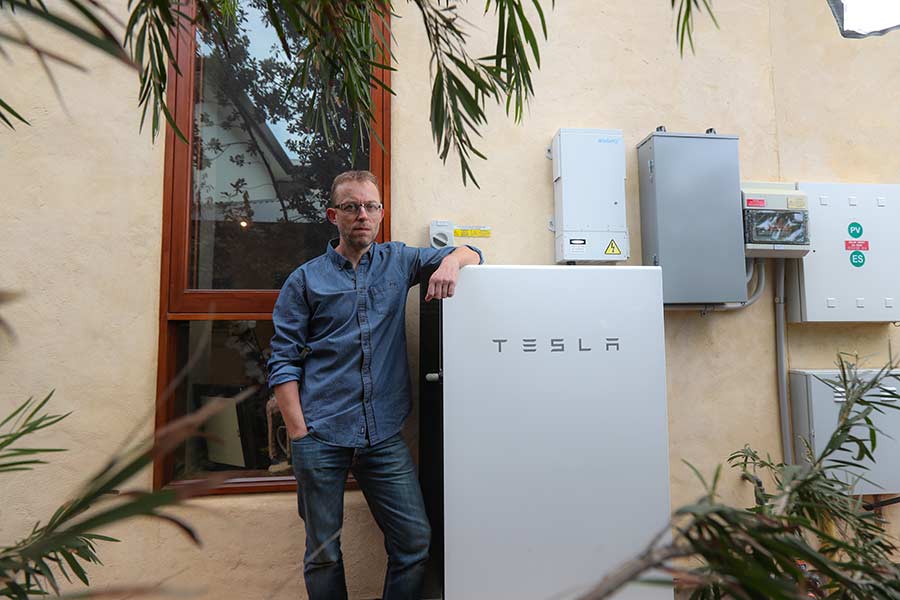
Despite the grimace – I really like this battery…
The problem is Tesla Powerwall is a bit on the pricey side. The same battery that cost $9,000 in 2017 currently costs around $12,100 . And that does not include the installation.
Expect to pay about $15,000 or more for an unsubsidised, fully installed Tesla Powerwall 2. If you are happy to pay that much – go for it – it’s a great unit.
But if you don’t want to pay that, there are many good alternatives closer to $10,000. We update our solar battery comparison table so you can see what’s available in Australia and how much they cost.
But the best way to get a locally-supported, well-installed home battery is to simply ask a good installer what they recommend as a ‘Powerwall alternative’. I can put you in touch with up to three local battery installers who’ll be happy to advise.
Mistake #5 – Not getting blackout protection
Intuitively, people assume all home batteries will back up your house during a blackout.
But I’ve seen plenty of cases where a battery has been installed that won’t back up the home. Or one that will provide backup, but won’t charge from the solar panels until after the blackout has ended.
Have an in-depth discussion with your installer about what your expectations are for how the battery will perform in the event of a blackout.
Questions to ask your installer:
- How many circuits will it run?
- How many fridges will it start? (Motors in fridges and rainwater pumps etc., can demand around seven times their rated current to get them started.)
- Will the solar panels charge it without the grid?
Then make sure the installer puts that in writing on the quote so there are no nasty surprises the next time the grid goes down.
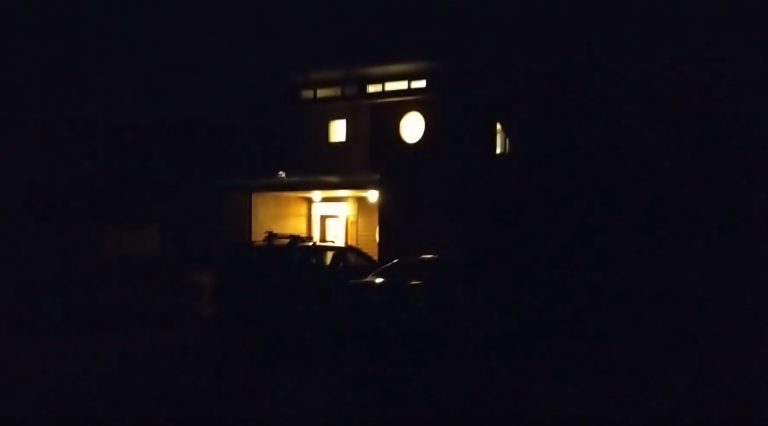
My battery-backed-up home during a blackout.
Mistake #6 – Not understanding battery-friendly electricity tariffs and VPPs
Time-of-Use Tariffs
Most people have a ‘flat’ electricity tariff. They pay the same rate for electricity regardless of the time of day. But ‘time-of-use’ tariffs are gaining popularity. These charge different rates for electricity depending on the time of day.
Usually, they’ll charge a higher rate in the evening and cheaper rates during the day and after you’re in bed:

An example Time Of Use Tariff from SA
For a home with solar power and a battery system, this means you can charge your battery from solar panels during the day, and usually power through the evening peak using the stored energy.
Compare the savings for a home in Sydney with a home battery on a flat tariff versus a time of use:
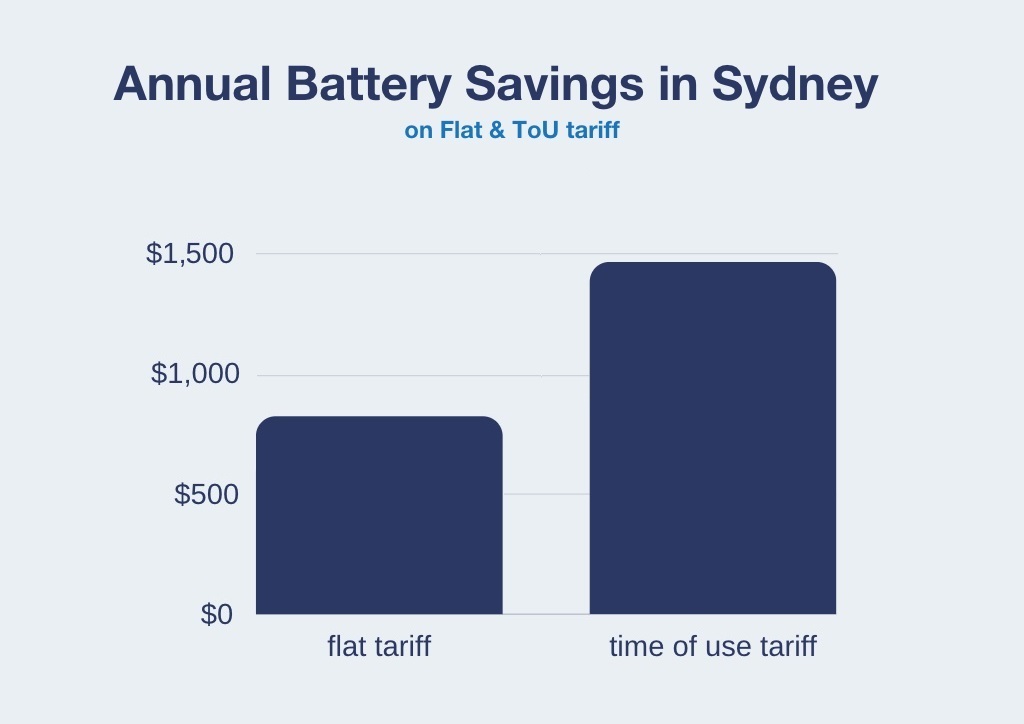
These values are dependent on many variables. See here for my assumptions.
Virtual Power Plants
Virtual Power Plants (VPPs) are a new kind of tariff for battery owners offered by more and more energy retailers. If you sign up for one, you give up control of your solar battery to the VPP operator.
Why would you want to do this? Well:
- You may get an upfront discount on a solar battery system if you buy a battery through a VPP.
- Some VPPs pay you either a fixed monthly credit, or arrange a profit share from charging or discharging the battery when the grid needs support. Depending on the VPP, this may substantially improve the battery’s economics.
- Some VPPs give you a higher feed-in-tariff and/or lower usage tariffs in return for them controlling your home battery system.
But there’s no such thing as a free lunch:
- The more you use a solar battery, the shorter its lifespan. This effect should only be small for quality batteries, but it’s still an issue.
- Stored energy is usually most valuable in the evening peak. VPP operators may force your battery system to charge mid-afternoon (from the grid if there’s not enough solar), discharging into the grid shortly after sundown, leaving you with little or no battery energy to get you through the night.
One of my team bought a SolarEdge battery and, at the time, the only VPP compatible with his battery system was one run by Powershop – which paid $10/month. They would also pay $0.55 for every kWh they discharged to support the grid, but if they charged the battery from the grid he would have to pay at the normal rate and, depending on the plan, he could be charged more than he’d receive.
So, in exchange for a measly $120 a year, his battery would potentially be hammered by Powershop, shortening its lifespan. On top of that, he might have to pay for the privilege. <sarcasm>What a deal!</sarcasm>
More VPPs are available now, but it’s hard to be certain if they’re any better.
Make sure you balance the promised savings from joining a VPP with the expected degradation in the battery to decide if joining one is right for you.
Mistake #7 – Misunderstanding Modular Batteries
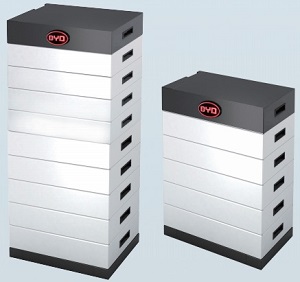
Modular batteries can be expanded by plugging in more modules. Like this BYD B-Box HV.
I read a well-meaning article recently advising that consumers buy modular batteries. The idea is that you start off with a small home battery system and then ‘plug and play’ new batteries over the years as your budget allows.
This is a bad idea. Battery models can quickly become obsolete very. The odds are compatible modules for your home battery won’t be available in 2+ years’ time. And expanding your storage capacity involves paying an installer and may involve complex wiring and hardware changes. ‘Plug and play’ is nice in the marketing brochures but rare in practice.
Modular batteries are a great design for installers. They are easier to maneuver than one giant battery and can save back injuries. There are some great modular energy storage solutions out there, like Sungrow, BYD, and Sigenergy. But choose and size your battery system carefully at the outset – don’t undersize your system thinking you can easily plug and play extra modules later.
Mistake #8 – Not knowing the difference between power and energy
This one is a bit technical. I left it to last to avoid scaring anyone off too soon.
A battery is specified by its Power Input/Output (kW) and Energy Storage Capacity (kWh).
For example, the SolarEdge Home Battery is a 5 kW, 10 kWh energy storage system. It can charge and discharge at a rate (power) of 5 kW and store 10 kWh of energy.
It is essential the home battery system you buy has enough power and energy storage capacity to meet your needs which may be:
- getting through the evening peak or
- getting through the whole night or
- backing up your whole home
- or something else
…depending on your particular circumstances.
There’s a more detailed explanation on the difference between power and energy here.
The next step
So there you have it – the top mistakes I’ve seen people make when buying a home battery.
If you’re considering installing solar and batteries for your home or business, SolarQuotes can help you get quotes from high-quality installers quickly and easily: